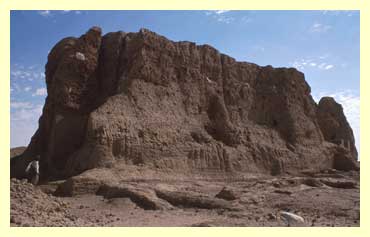The Kingdom of Kush was ruled from Kerma
The most powerful Nubian state of the early 2nd millennium BC was based at Kerma, a partly fortified settlement near the 3rd cataract. While perhaps only 2000 people lived in the city of Kerma, distinctive Kerma culture is found from the 2nd cataract to beyond the 4th cataract, more than 200 miles. The city itself was dominated by a tall mudbrick temple, a palace, and a royal audience hall. To the east of the city were funerary temples and chapels amidst an extensive cemetery. The largest tombs were four royal burial mounds nearly 300 feet in diameter that contained the sacrificial burials of human servants as well as animals.

Kerma recaptured northern Nubia from Egypt
Consolidation of power by Kerma’s rulers brought its army, which was built around archers, into conflict with Middle Kingdom Egypt by 1650 BC. Known to the Egyptians as Kush, which may be the indigenous name of the kingdom, the territory controlled by Kerma ultimately expanded north of the Egyptian fortresses at the 2nd cataract. The military support of the kings of Kush was sought by the Hyksos, rulers of Canaanite origin who occupied the Nile delta, in their attempt to overwhelm Egypt. Conflict ended with the rise of the Egyptian New Kingdom whose early rulers brought Kush under Egyptian control by about 1500 BC.
Kerma’s focus was a temple known as the deffufa, a Nubian term for a fortified mudbrick building. Nearby Workshops produced metal, faience, and other goods.

